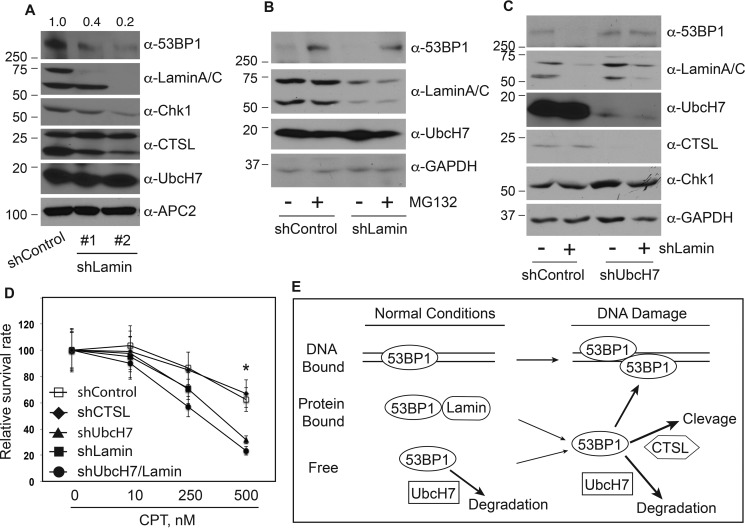Figure 8.
Lamin A/C stabilized 53BP1. A, A549 cells were stably infected with a control shRNA or two independent shRNAs targeting the LMNA (the lamin A/C gene) that encodes lamin A/C. Protein expression was then determined using the indicated antibodies. Protein quantitation was performed as in Fig. 1A. B, A549 stable cells infected with control shRNA or shLamin were treated with 10 μm MG132 or vehicle for 6 h, and protein expression was examined. C, protein expression in A549 cells stably transduced with control shRNA, shLamin, shUbcH7, or ShUbcH7 plus shLamin. D, clonogenic survival assay in A549 stable cell lines transduced with control shRNA, shCTSL, shUbcH7, shLamin, or shUbcH7 plus shLamin were performed as described under “Experimental Procedures.” Data represent the means and S.D. from two experiments in duplicate. *, p < 0.001. E, model of 53BP1 protein level regulation. Under normal growth conditions, 53BP1 exists in at least three forms including chromatin-bound and lamin A/C-bound and free forms. UbcH7 regulates the proteasomal degradation of free forms of 53BP1 proteins. When cells are treated with DNA-damaging agents, 53BP1 in the lamin A/C-bound form will be released into the free form, which not only facilitates its recruitment to DSB sites but is also available for UbcH7-dependent degradation and to a much lesser extent, CTSL-dependent cleavage.

